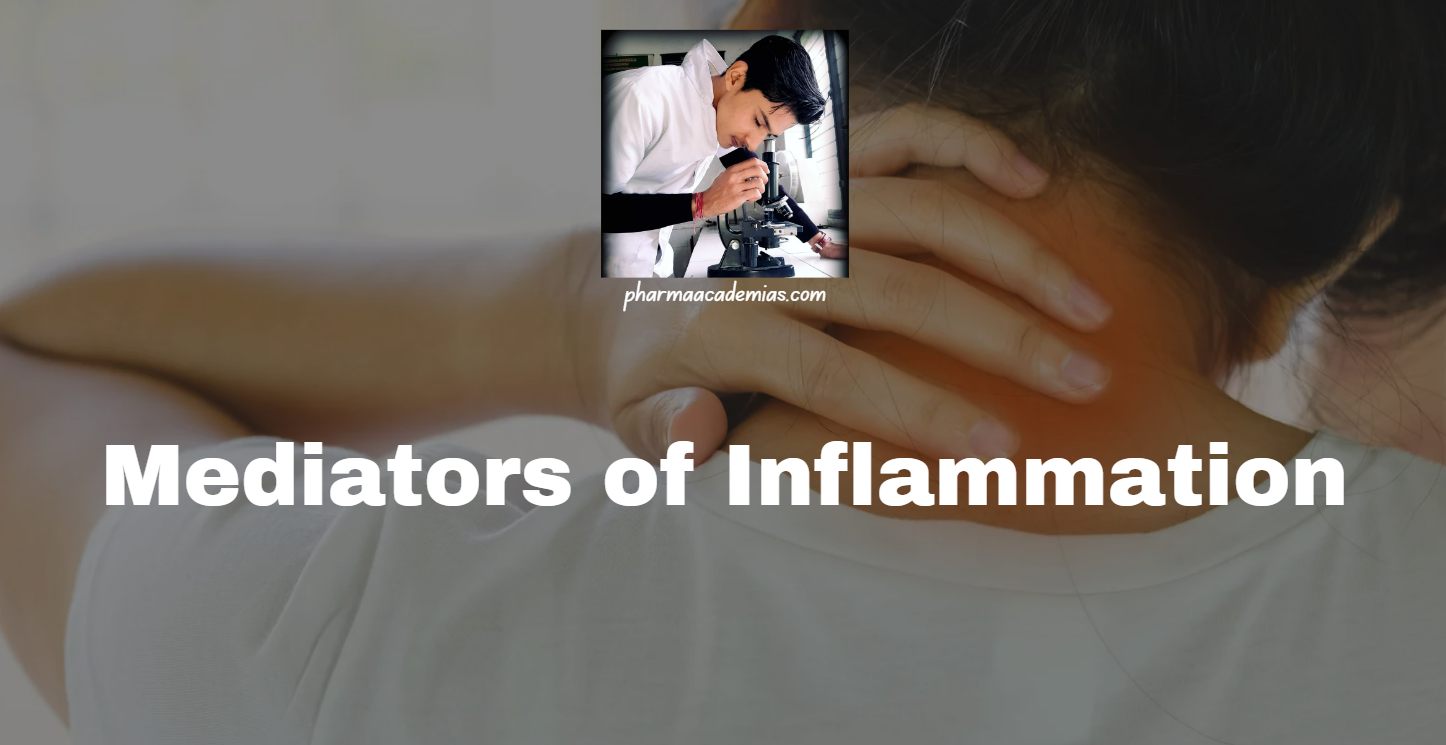Inflammation is regulated by a complex network of chemical mediators that orchestrate the response to injury or infection. These mediators originate from various cells and tissues and include vasoactive amines, lipid mediators, cytokines, chemokines, and other small molecules. They play roles in vasodilation, increased vascular permeability, leukocyte recruitment, and other aspects of the inflammatory response.
1. Vasoactive Amines
a. Histamine
Histamine is a biogenic amine involved in immune responses, gastric acid secretion, and neurotransmission, acting through histamine receptors to mediate inflammation, allergic reactions, and physiological functions.
– Source: Stored in mast cells, basophils, and platelets.
– Release Triggers: Physical injury, immune reactions (binding of IgE), complement fragments (C3a and C5a), and cytokines (IL-1).
– Functions:
– Vasodilation: Increases blood flow to the affected area.
– Increased Vascular Permeability: Causes endothelial cell contraction, leading to gaps in the vessel wall.
– Bronchoconstriction: Constriction of the airways, particularly relevant in allergic reactions.
b. Serotonin
Serotonin is a neurotransmitter and biogenic amine that regulates mood, appetite, sleep, and various physiological processes by acting on serotonin receptors in the central nervous system and peripheral tissues.
– Source: Platelets and enterochromaffin cells.
– Release Triggers: Platelet aggregation and activation during blood clotting.
– Functions:
– Vasoconstriction: Constriction of blood vessels, although its role in inflammation is less prominent compared to histamine.
2. Lipid Mediators
a. Prostaglandins
Prostaglandins are lipid-derived bioactive compounds synthesized from arachidonic acid that regulate inflammation, pain, fever, blood flow, and other physiological processes by acting on specific prostaglandin receptors.
– Source: Synthesized from arachidonic acid via the cyclooxygenase (COX) pathway in many cells, particularly leukocytes, endothelial cells, and platelets.
– Key Types and Functions:
– PGE2: Vasodilation, increased vascular permeability, pain, and fever.
– PGI2 (Prostacyclin): Vasodilation and inhibition of platelet aggregation.
– TXA2 (Thromboxane A2): Vasoconstriction and promotion of platelet aggregation.
b. Leukotrienes
Leukotrienes are lipid-derived inflammatory mediators synthesized from arachidonic acid through the lipoxygenase pathway, playing a key role in bronchoconstriction, allergic reactions, and immune responses.
– Source: Produced from arachidonic acid via the lipoxygenase pathway in leukocytes, particularly neutrophils and macrophages.
– Key Types and Functions:
– LTB4: Strong chemotactic agent for neutrophils.
– LTC4, LTD4, and LTE4: Increase vascular permeability, bronchoconstriction, and mucous secretion.
c. Lipoxins
Lipoxins are anti-inflammatory lipid mediators derived from arachidonic acid through the lipoxygenase pathway, playing a crucial role in resolving inflammation and promoting tissue repair.
– Source: Generated from arachidonic acid via interactions between lipoxygenases in leukocytes and platelets.
– Functions:
– Anti-inflammatory: Inhibit neutrophil chemotaxis and adhesion, promoting resolution of inflammation.
3. Cytokines
Cytokines are small signaling proteins released by immune cells that regulate inflammation, immune responses, cell growth, and communication between cells.
a. Tumor Necrosis Factor (TNF) and Interleukin-1 (IL-1)
– Source: Produced by activated macrophages, dendritic cells, and other cells.
– Functions:
– Induction of endothelial adhesion molecules (E-selectin, ICAM-1, VCAM-1).
– Activation of leukocytes and endothelial cells.
– Induction of acute-phase responses (fever, synthesis of acute-phase proteins by the liver).
b. Interleukin-6 (IL-6)
– Source: Macrophages, T cells, and endothelial cells.
– Functions:
– Acute-phase response.
– Stimulation of production of neutrophils in the bone marrow.
– B cell differentiation.
c. Interleukin-8 (IL-8, CXCL8)
– Source: Macrophages, endothelial cells, and other cell types.
– Functions:
– Chemotaxis of neutrophils.
– Activation of neutrophils.
d. Interleukin-10 (IL-10)
– Source: Macrophages, regulatory T cells.
– Functions:
– Anti-inflammatory: Inhibits cytokine production by activated macrophages and dendritic cells, limiting the immune response.
4. Chemokines
– Source: Various cells, including macrophages, endothelial cells, and fibroblasts.
– Functions:
– Direct the migration of leukocytes to sites of inflammation.
– CC Chemokines: Primarily attract monocytes, eosinophils, basophils, and lymphocytes.
– CXC Chemokines: Primarily attract neutrophils.
5. Plasma Protein Systems
a. Complement System
– Source: Plasma proteins produced by the liver.
– Functions:
– C3a and C5a: Anaphylatoxins that increase vascular permeability and act as chemotactic agents for neutrophils.
– C5b-9 (Membrane Attack Complex): Directly lyses pathogens.
– C3b: Opsonin that enhances phagocytosis.
b. Kinin System
– Source: Plasma proteins produced by the liver.
– Functions:
– Bradykinin: Increases vascular permeability, induces smooth muscle contraction, causes vasodilation, and contributes to pain.
c. Coagulation and Fibrinolytic Systems
– Source: Plasma proteins produced by the liver.
– Functions:
– Formation of fibrin clot which helps to limit the spread of infection.
– Fibrinolytic system (plasmin) breaks down clots and also activates complement.
6. Nitric Oxide (NO)
– Source: Produced by endothelial cells, macrophages, and neurons.
– Functions:
– Vasodilation.
– Inhibits platelet aggregation and leukocyte adhesion.
– Microbicidal activity of macrophages.
7. Reactive Oxygen Species (ROS)
– Source: Produced by activated phagocytes (neutrophils and macrophages).
– Functions:
– Killing of microbes.
– Can cause tissue damage if not regulated properly.
8. Neuropeptides
– Source: Nerve fibers, especially in the gastrointestinal and respiratory tracts.
– Examples: Substance P and calcitonin gene-related peptide (CGRP).
– Functions:
– Transmission of pain signals.
– Regulation of vascular tone and permeability.
Conclusion
The mediators of inflammation are diverse and operate in a highly regulated manner to ensure an effective and appropriate inflammatory response. They not only help in combating infections and healing injuries but also, if unregulated, can contribute to chronic inflammation and various inflammatory diseases. Understanding these mediators and their roles provides critical insights into the mechanisms of inflammation and potential therapeutic targets for controlling excessive inflammatory responses.


 Join Our Telegram Channel
Join Our Telegram Channel